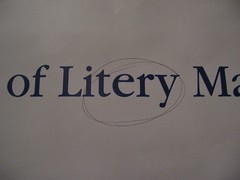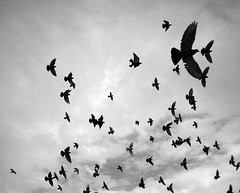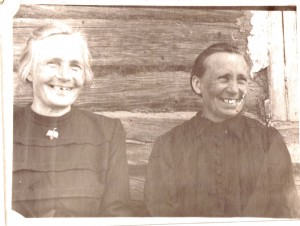
The Writers’ Union of Canada
Deadline: June 29, 2010
Job Description: Executive Director
www.writersunion.ca/executivedirector.pdf.
The Position Summary:
Reporting to the National Council Executive, the Executive Director is the senior staff officer of the Union, responsible for its successful leadership and management under the strategic direction set by the National Council.
Primary Duties and Responsibilities
The Executive Director performs some or all of the following:
Leadership
· Participates with the National Council in developing a strategic plan to guide the Union
· Identifies, assesses, and informs the National Council of internal and external issues that affect the Union
· Acts as a professional advisor to the National Council on all aspects of the Union‘s activities
· Fosters effective teamwork throughout the organization
· Conducts official correspondence on behalf of and/or in coordination with the National Council as appropriate
· Represents the organization at public activities to enhance the Union‘s community profile
Operational planning and management
· Develops an operational plan to implement the strategic plan of the Union
· Ensures that the operation of the Union meets the expectations of its members, National Council and funders
· Oversees the efficient and effective day-to-day operation of the Union
· Drafts policies for the approval of the National Council and prepares implementation procedures; regularly reviews existing policies and recommends changes to the National Council as appropriate
· Ensures that personnel and member files are securely stored and privacy/ confidentiality is maintained
· Supports the National Council by preparing meeting agendas and support materials, and by comprehensively assisting at the Annual General Meeting and all National Council meetings
Program planning and management
· Oversees the planning, implementation and evaluation of the Union’s programs, services and special projects, ensuring that they contribute to the Union‘s mission and reflect the priorities of the National Council
· Monitors the day-to-day delivery of programs and services to maintain or improve quality
Human resources planning and management
· Determines staffing requirements for organizational management and program delivery
· Oversees the implementation of human resources policies, procedures and practices including the development of job descriptions for all staff
· Recruits, interviews and selects staff that have the right technical and personal abilities to help further the organization’s mission
· Ensures that all staff receive an orientation to the organization and appropriate training
· Establishes a positive, healthy and safe work environment in accordance with all appropriate legislation and regulations
· Coaches and mentors staff as appropriate to improve performance
· Implements a performance management process for all staff which includes regularly monitoring staff performance and conducting an annual performance review
· Disciplines staff when necessary using appropriate techniques; releases staff when necessary using appropriate and legally defensible procedures
Financial planning and management
· Works with staff, the Treasurer and National Council to prepare a comprehensive budget
· Works with the National Council to secure adequate funding for the operation of the Union
· Researches funding sources, oversees the development of fundraising plans, writes proposals, and participates in fundraising activities to increase Union revenues
· Approves expenditures within the authority delegated by the National Council
· Ensures that sound bookkeeping and accounting procedures are followed
· Administers the funds of the Union according to the approved budget and monitors monthly cash flow
· Provides the National Council with comprehensive, regular reports on the revenues and expenditures of the Union
· Ensures that the Union complies with all legislation covering taxation and withholding payments
Community relations/advocacy
· Communicates with members and sector partners to keep them informed of the work of the Union and to identify changes in the community served by the Union
· Establishes good working relationships and collaborative arrangements with community groups, funders, politicians, and other organizations
· Heightens and enhances the Union’s public profile
· Publicizes the Union’s positions on issues as directed by National Council
· Researches arts issues, becomes familiar with government departments, and prepares background papers on policies affecting Union members
· Advocates on behalf of the Union by lobbying federal and provincial governments to forward the interests of Canada’s book writers
Risk management
· Identifies and evaluates the risks to the Union‘s people (members, staff, volunteers), property, finances, goodwill, and image, and implements measures to control risks
· Ensures that the National Council and the Union carry appropriate and adequate insurance coverage, and that the Board and staff understand the terms, conditions and limitations of that coverage
Qualifications
Education
· University degree in a related field
Knowledge, skills and abilities
· Knowledge of leadership and management principles as they relate to National Arts Service /non-profit/ voluntary organizations
· Knowledge of all federal and provincial legislation applicable to voluntary sector organizations including: employment standards, human rights, occupational health and safety, charities, taxation, CPP, EI, health coverage etc…
· Knowledge of current community challenges and opportunities relating to the mission of the Union
· Knowledge of human resources management
· Knowledge of financial management
· Knowledge of project management
· Knowledge of marketing and communications
Proficiency in the use of computers for:
· Word processing
· Financial management
· E-mail
· Internet research
· Marketing and communications, including social networking
Personal characteristics
The Executive Director should demonstrate competence in some or all of the following:
· Adapts Well: Demonstrates a willingness to be flexible, versatile and/or tolerant in a changing work environment while maintaining effectiveness and efficiency.
· Behaves Ethically: Understands ethical behaviour and business practices, and ensures that his/her own behaviour and the behaviour of others is consistent with these standards and aligns with the values of the Union.
· Thinks Strategically: Assesses options and actions based on trends and conditions in the environment, and the vision and values of the Union.
· Builds Relationships: Establishes and maintains positive working relationships with others, both internally and externally, to achieve the goals of the Union.
· Communicates Effectively: Speaks, listens and writes in a clear, thorough and timely manner excelling in the use of all effective methods of public communication on behalf of the Union.
· Demonstrates Creativity and Innovation: Develops new and unique ways to improve the operations of the Union and to create new opportunities.
· Focuses on Member Needs: Anticipates, understands, and responds to the needs of members and sector partners to meet or exceed their expectations within the Union’s scope of work.
· Fosters Teamwork: Works cooperatively and effectively with others to set goals, resolve problems and enhance organizational effectiveness.
· Excels in Research: Conducts thorough and useful research into writing and other arts-related issues to support informed decision-making by National Council and to enhance member services.
· Leads Effectively: Influences others in positive ways to achieve results that further the work of the Union.
· Makes Decisions: Assesses situations to determine the importance, urgency and risks, and makes clear decisions which are timely and in the best interests of the Union.
· Plans and Organizes: Determines strategies, sets priorities, develops a work schedule, monitors progress towards goals, and evaluates the process and results.
· Solves Problems: Assesses problem situations to identify causes, gathers and processes relevant information, generates possible solutions, and makes recommendations and/or resolves the problem.
Experience
· 5 or more years of progressive management experience in a not for profit organization
Working Conditions
· The Executive Director usually works in an office environment, but the mission of the organization may sometimes take him or her to non standard workplaces. Some travel is usually required.
· The Executive Director works a standard work week, but additionally will often work evening and weekends, to accommodate activities such as National Council meetings and representing the organization at public events.
[Photo: Chapendra]











